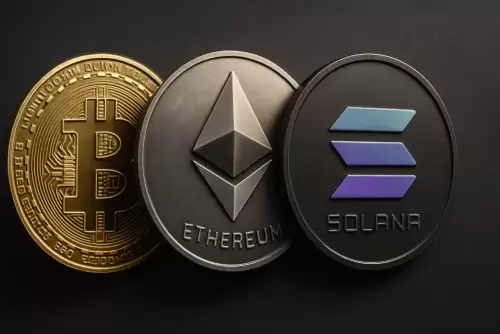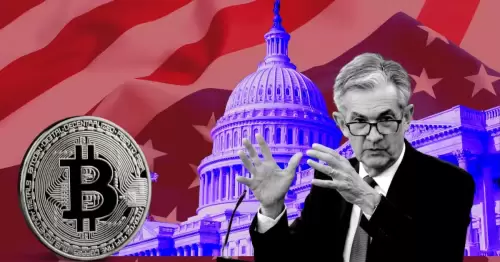 |
|
 |
|
 |
|
 |
|
 |
|
 |
|
 |
|
 |
|
 |
|
 |
|
 |
|
 |
|
 |
|
 |
|
 |
|
If you've ever wished for a cryptocurrency that doesn't swing wildly in value, stablecoins are the answer. Unlike Bitcoin or other volatile digital assets, stablecoins are designed to maintain a steady price

If you’re tired of cryptocurrencies wildly swinging in value, you’ll want to meet their more stable counterparts: stablecoins.
Unlike Bitcoin or other volatile digital assets, stablecoins are designed to maintain a steady price, making them a practical choice for everyday transactions, savings, and trading.
These coins stay stable by being backed by fiat currency, reserves, or smart contracts. They also serve as a bridge between traditional banking systems and crypto.
There are different types of stablecoins, each with a unique way of maintaining stability.
To understand how they work and their role in the evolving crypto landscape, let’s delve into the world of stablecoins.
What is an Example of Stablecoins?
Stablecoins exist in different forms. Each type is designed to maintain price stability using specific mechanisms. Some of the most widely used stablecoins include:
Is Bitcoin a Stablecoin?
No, Bitcoin is not a stablecoin. Its price changes constantly based on demand and investor activity.
However, stablecoins are designed to keep a fixed value, like being directly tied to the U.S. dollar.
In early 2025, Bitcoin experienced a surge from $70,000 to over $100,000. Market trends and policy shifts caused this rapid increase.
Such significant price swings make Bitcoin unreliable for stable transactions, especially in today’s rapidly changing economic landscape.
On the other hand, stablecoins like USDT and USDC maintain a relatively steady value.
Despite minor fluctuations, they closely follow the U.S. dollar, making them a more reliable cryptocurrency for payments and everyday use.
The stablecoin market is growing rapidly and is expected to reach $3 trillion over the next five years. Experts anticipate that USDT and USDC will remain dominant due to their high level of trust and liquidity.
What is the Point of a Stablecoin?
In a market like crypto, where things can get dicey quickly, stablecoins provide a beacon of predictability. They offer faster and cheaper transactions while making digital finance more reliable.
Moreover, stablecoins serve as a bridge between traditional banking and crypto assets, streamlining cross-border payments.
This allows businesses and individuals to use them for everyday transactions without worrying about sudden price changes or compatibility issues.
Key Benefits of Stablecoins:
Here is what Stablecoins offer:
How Do Stablecoins Work?
Stablecoins function through a structured process that ensures stability and transparency. Their value remains constant because they are backed by assets or controlled by smart contracts.
When a company issues stablecoins, they are recorded on a ledger system. This ledger keeps track of ownership and transactions, guaranteeing security and preventing crypto fraud.
Users store their stablecoins in digital wallets, enabling them to safely send, receive, and store funds.
Smart contracts adjust the supply as needed. If demand increases, the system creates new stablecoins. Conversely, if demand drops, excess coins are removed from circulation.
This helps maintain a stable value, making stablecoins a reliable financial instrument in the crypto market.
Types of Stablecoins
Stablecoins use different methods to maintain a steady value. They fall into four main categories based on what backs them:
Why Are Stablecoins So Important?
Cryptocurrencies like Bitcoin and Ethereum are known for their volatile prices, making them unsuitable for everyday transactions.
However, stablecoins provide a stable cryptocurrency that can be used for daily payments. Their stability is crucial for businesses using them for payroll, cross-border transfers, and other transactions.
In decentralized finance (DeFi), stablecoins are used to facilitate lending, borrowing, and liquidity. Many financial institutions are integrating stablecoins into their digital payment systems to reduce costs and increase efficiency.
Stablecoins are also subject to audits to ensure the trustworthiness of their stated reserves. Critics argue that fiat currencies already serve this purpose.
On the other hand, proponents believe that decentralized assets hold the key to the future of finance, free from government control.
As stablecoins continue to evolve, they have the potential to transform the financial landscape. They provide a secure link between banks and digital assets, opening up new possibilities for cross-border payments and financial inclusion.
Disclaimer:info@kdj.com
The information provided is not trading advice. kdj.com does not assume any responsibility for any investments made based on the information provided in this article. Cryptocurrencies are highly volatile and it is highly recommended that you invest with caution after thorough research!
If you believe that the content used on this website infringes your copyright, please contact us immediately (info@kdj.com) and we will delete it promptly.
-

-

-

-

-

-

- South Korean Democratic Party Leader Lee Jae-myung Promises Spot Crypto ETF Approval If Elected
- May 07, 2025 at 03:10 pm
- South Korea’s Democratic Party leader Lee Jae-myung has reportedly become the latest presidential candidate to promise the approval of spot crypto exchange-traded funds (ETFs) and other
-

-

- Robert Kiyosaki Predicts Bitcoin Will Outperform Gold, Targeting $150,00
- May 07, 2025 at 03:05 pm
- As gold inches closer to the $5000 mark, investors are turning their attention to Bitcoin. Historically, when both assets rally, Bitcoin tends to outperform — and with gold making fresh highs, analysts believe Bitcoin could be next.
-
























































